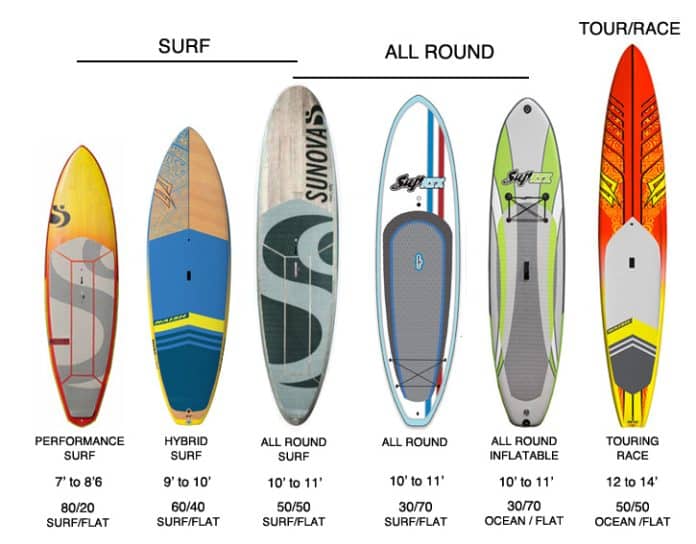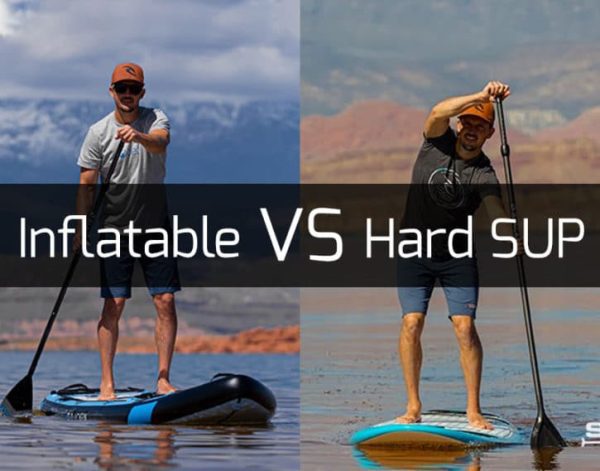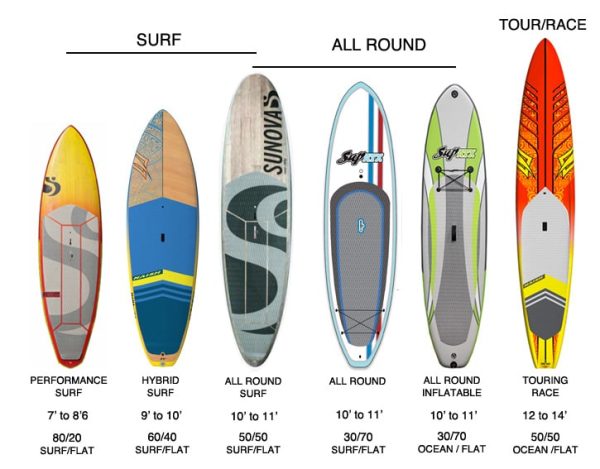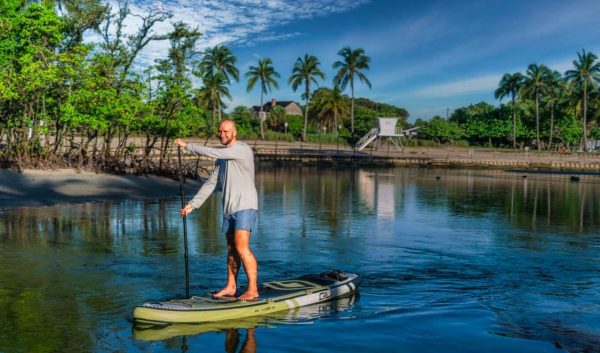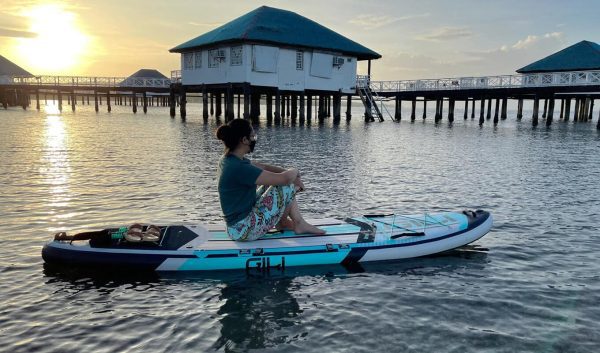Curious about the difference between a SUP and a paddle board? We’re here to enlighten you! It’s a common problem that often leaves beginners scratching their heads.
While the terms are often used interchangeably, there is a subtle distinction between the two.
So, please sit back, relax, and let us demystify this aquatic mystery.
Definition of SUP
SUP stands for Stand-Up Paddleboarding
Stand-up paddleboarding, commonly referred to as SUP, is a thrilling and popular water sport that involves standing on a specially designed-board and propelling oneself through the water using a paddle.
It combines elements of surfing and kayaking, offering a unique and exciting experience for all ages and skill levels. SUP has gained immense popularity in recent years due to its versatility and accessibility, providing an excellent opportunity to explore various bodies of water such as lakes, rivers, and even oceans.
Origin of SUP
The origins of Stand-Up Paddleboarding can be traced back to ancient cultures such as Polynesia and Hawaii, where it was an integral part of their water activities for centuries.
The Hawaiian islanders, in particular, used large wooden boards and long paddles to navigate the coastal waters for both fishing and recreational purposes. In the modern context, SUP experienced a resurgence in the 20th century as surfers in Hawaii started using paddles to catch waves with an elevated perspective. This evolution eventually led to the birth of Stand-Up Paddleboarding as a standalone sport.
Characteristics of SUP
Its unique features and characteristics characterize stand-up paddleboarding, distinguishing it from other water sports. One of the defining aspects of SUP is the standing position on the board, which offers a higher vantage point and a greater sense of control over the water. Additionally, a single paddle enables paddlers to navigate and propel themselves efficiently through various water conditions.
SUP boards are typically longer, wider, and more stable than traditional surfboards, making them suitable for various activities and skill levels. Whether navigating calm lakes, riding waves, exploring rivers, or even practicing yoga, SUP offers all enthusiasts a versatile and enjoyable experience.
Definition of Paddle Board
Paddle Boarding as a Broad Term
“paddleboarding” is often used as a broad umbrella term to encompass various types of paddle-powered water sports, including Stand-Up Paddleboarding, prone paddleboarding, and kayaking. While Stand-Up Paddleboarding falls under the paddleboarding category, it is essential to differentiate between the two to understand their unique characteristics and applications.
Origin of Paddle Boarding
In its broader sense, Paddle Boarding has been practiced by different cultures for centuries. The use of paddles for propelling oneself through the water has roots in ancient civilizations, where it served as a means of transportation, fishing, and leisure. Over time, paddleboarding evolved into distinct disciplines, such as Stand-Up Paddleboarding, which became popular in recent decades.
Characteristics of Paddle Boards
Paddle boards, as a term encompassing various paddle-powered watercraft, share certain common characteristics regardless of their specific type. Paddle boards are designed to offer water stability, buoyancy, and maneuverability. They are typically longer, broader, and more stable than traditional surfboards, enabling paddlers to kneel or sit on the board while propelling themselves forward with a paddle.
Paddleboards can be made from various materials, such as fiberglass, carbon fiber, inflatable materials, or even wood, depending on the intended use and preferences of the paddler.
Design
SUP Design
SUP boards are carefully designed to provide optimal performance and stability on the water. They come in various shapes, sizes, and designs, catering to different riding styles and conditions. The design elements of a SUP board play a crucial role in determining its maneuverability, stability, and speed.
Paddle Board Design
The design of paddle boards is also crucial to their performance and functionality. Paddle boards are designed to provide stability, buoyancy, and ease of use while paddling. A paddle board’s shape, size, and construction influence its maneuverability, speed, and suitability for different types of water and riding styles.
Length
SUP Length
The length of a SUP board is an essential factor that affects its performance and stability. SUP boards come in various lengths, ranging from 8 to 14 feet or more. The length of the board primarily depends on the intended use, the rider’s skill level, and prevailing water conditions.
Paddle Board Length
Similarly, the length of a paddle board is an essential consideration when choosing the right board for your needs. Paddle boards come in different lengths, typically around 9 feet to 12 feet or more. The length of the paddle board influences its maneuverability, stability, and speed.
Shape
SUP Shape
The shape of a SUP board determines its stability, maneuverability, and suitability for different types of water conditions. SUP boards can have various shapes, including displacement hulls, planing hulls, rounded noses, pointed noses, and various combinations of these features. Each shape offers specific advantages and characteristics that cater to different riding styles and conditions.
Paddle Board Shape
Paddle boards also come in various shapes to optimize their performance and versatility. Paddleboard shapes can include displacement hulls, planing hulls, rounded noses, pointed noses, and other variations. The shape of the paddle board influences its stability, maneuverability, and suitability for different water conditions and riding styles.
Width
SUP Width
The width of a SUP board is an important aspect that determines its stability and balance on the water. A wider SUP board generally offers excellent stability, making it ideal for beginners or those who prefer a more stable platform. However, wider boards may sacrifice some maneuverability, especially in rougher water conditions.
Paddle Board Width
Similarly, the width of a paddle board is a crucial factor in determining its stability and balance. A wider paddle board provides enhanced stability, making it easier for beginners or those looking for a more stable platform. However, wider boards may be slightly less maneuverable, particularly in challenging water conditions.
Construction
SUP Construction
SUP boards can be constructed using different materials and techniques, each offering unique advantages and considerations. Standard construction methods include fiberglass, carbon fiber, soft-top foam, and inflatable materials. The choice of construction method depends on factors such as desired performance, durability, weight, and budget.
Paddle Board Construction
Like SUP boards, paddle boards can be constructed using various materials and techniques. The construction method significantly influences the board’s performance, durability, weight, and cost. Standard construction methods for paddle boards include fiberglass, carbon fiber, inflatable materials, and wooden construction.
Riding Style
SUP Riding Style
SUP boards are designed to cater to various riding styles, each offering a distinctive experience on the water. Common SUP riding styles include cruising, surfing, touring, fishing, and even yoga. SUP boards are designed with specific features and characteristics to enhance each riding style’s performance and stability.
Paddle Board Riding Style
Paddle boards, being a broad term, accommodate different riding styles and activities on the water. Whether paddling in the water, catching waves, embarking on a multi-day expedition, or engaging in fishing activities, paddle boards offer versatility and options for various riding styles and preferences.
Types of SUPs and Paddle Boards
Inflatable SUPs
Inflatable SUPs, often referred to as iSUPs, are popular for their portability, durability, and ease of storage. These SUPs are made from durable PVC material and can be inflated and deflated for easy transportation. Inflatable SUPs offer excellent stability and versatility, suitable for riders of all skill levels.
Surf SUPs
Surf SUPs are specifically designed for riding waves and offer enhanced maneuverability and agility in surf conditions. These SUPs typically have a shorter length, narrower width, and a more pronounced rocker for better wave performance.
Touring SUPs
Touring SUPs are designed for paddling long distances and exploring various bodies of water. These SUPs typically have a longer length, narrower width, and a streamlined shape to optimize speed and efficiency. Touring SUPs often come with additional features, such as bungee cords for gear storage and multiple fin options for stability.
Fishing SUPs
Fishing SUPs are specifically designed with additional features to accommodate fishing enthusiasts. These SUPs often have enhanced stability, more expansive decks, and specially designed attachments for securing fishing gear, coolers, and other accessories.
Yoga SUPs
Yoga SUPs focus on stability and comfort to provide a floating platform for practicing yoga on the water. These SUPs often feature wider widths, enhanced stability, and soft deck padding for added comfort during yoga sessions.
All-Around Paddle Boards
All-around paddle boards offer versatility and adaptability for a variety of water activities. These paddle boards are designed to balance stability, maneuverability, and speed, making them suitable for beginners and intermediate paddlers engaging in different water activities.
Surf Paddle Boards
Surf paddle boards are designed for riding waves and offer the necessary maneuverability and agility in surf conditions. These paddle boards typically have a shorter length, narrower width, and a more pronounced rocker for better wave performance.
Touring Paddle Boards
Touring paddle boards are designed for long-distance paddling and exploration of various bodies of water. These paddle boards have a longer length, narrower width, and a streamlined shape to optimize speed and efficiency. Touring paddle boards often come with additional features, such as bungee cords for gear storage and multiple fin options for stability.
Fishing Paddle Boards
Fishing paddle boards cater to fishing enthusiasts and are designed with features and attachments for securing fishing gear, coolers, and other accessories. These paddle boards offer enhanced stability, more expansive decks, and a comfortable platform for fishing activities.
Yoga Paddle Boards
Yoga paddle boards are specifically designed for practicing yoga on the water. These paddle boards prioritize stability and comfort, often featuring wider widths, enhanced stability, and soft deck padding to provide a floating platform for yoga sessions.
Which One to Choose?
Factors to Consider
Choosing between a SUP and a paddle board ultimately boils down to personal preference and the rider’s specific requirements. Several factors should be taken into consideration when making a decision:
Preference and Skill
Consider your preferences and skill level when choosing between a SUP and a paddleboard. If you prefer standing upright on the water with the versatility to engage in various activities, SUP might be the better option. If you prefer a broader term encompassing various paddle-powered watercraft, you might opt for a paddle board that caters to your interests, such as kayaking or prone paddleboarding.
Intended Use
Consider the primary purpose for which you will be using the board. If you plan on mainly engaging in surfing, touring, fishing, or yoga activities, you may want to choose a board with specific features catering to that activity. SUPs offer various options for different activities, while paddle boards encompass a broader spectrum of paddle-powered watercraft.
Transportation and Storage
Consider your transportation and storage needs. SUPs, particularly inflatable SUPs, offer greater portability and ease of storage due to their deflated and rolled-up ability. Depending on their type and size, Paddle boards may require additional transportation and storage considerations.
Budget
Lastly, consider your budget when making a decision. Depending on their construction, materials, and features, SUPs and paddle boards are available at various price points. Determine your budget range and prioritize your requirements accordingly.
In conclusion, the difference between an SUP and a paddle board lies primarily in the terminology and the specific water activity they refer to. SUP specifically refers to Stand-Up Paddleboarding, which involves standing on a paddleboard and propelling oneself through the water with a paddle.
On the other hand, the term “paddle board” is a broader umbrella term encompassing various paddle-powered watercraft. Both SUPs and paddle boards offer exciting opportunities for water enthusiasts of all ages and skill levels, with a wide range of designs, shapes, sizes, and features to cater to different riding styles and preferences.
Whether you choose a SUP or a paddle board, the key is to find the perfect board that aligns with your personal preferences, skills, intended use, transportation needs, and budget to maximize your enjoyment on the water.

